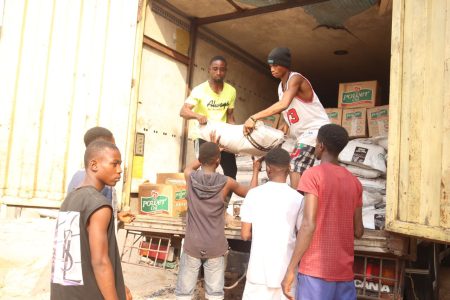Parenting Today
The holiday season is upon us! It’s the most magical time of the year and a perfect time to begin the tradition of volunteering as a family.
Most people volunteer as adults. But there are many benefits to introducing volunteerism to kids from the early developmental years to school age and through the teens. Kids often have a natural sense of altruism and a desire to help others. Volunteering is a great way to give back, get involved, and fulfill that innate desire. The key is to find something that your family loves.
The holidays offer the opportunity to make a difference to others who are less fortunate. Traditional volunteer opportunities still exist, like helping at a soup kitchen, but the health pandemic has brought out creative and safe ways to volunteer. Since gratitude is a significant benefit of regular volunteering, why not cultivate some gratitude within your family this holiday season?
A Sense of Gratitude
When you introduce kids to volunteering, you teach them a sense of gratitude. Often, volunteering involves helping others less fortunate. So, when kids see others who are not as lucky as they are, they develop a sense of understanding, appreciation, and thankfulness for what they do have. They gain a new appreciation for the food they eat, the clothes they wear, and the house they live in.
Handling Difficult Topics
Volunteering can introduce kids to difficult topics like homelessness and hunger. Very Well Family provides a helpful guide on how to explain these concepts in terms kids will understand. These conversations not only teach your children about the world around them, but they are also opportunities to learn more about each other and various points of view.
Diversity Lessons
Volunteering often teaches diversity, introducing kids to people of different ages, education, ethnicities, and backgrounds. Kids learn that each person is unique and that there is always something to learn from people who come from different backgrounds and situations.
Family Volunteerism
Volunteering as a family brings additional rewards. Kids are great imitators. By volunteering with your kids, they see your empathy and compassion and are likely to mimic it in their own lives. The time spent together also creates memories and builds bonds.
Finding the Right Fit
Volunteering doesn’t have to be complicated or costly or time-consuming. Pbs.org suggests that volunteering should be enjoyable and simple to add to your family schedule. Even a young child can make a huge difference in someone else’s life by volunteering. The activity should fit your family’s personality and dynamic.

Volunteering Ideas
- Assist at a food pantry stocking shelves. Start with an hour and work up to longer periods of time, especially with younger kids, as recommended by Scholastic.com.
- Volunteer at a local soup kitchen.
- Collect and deliver items to your local animal shelter or wildlife rescue, such as toys, towels, or pet food. Or, do something as simple as volunteering to walk your neighbor’s dog, pet sit for an afternoon, or clean out litter boxes.
- Bake together and take the treats to firefighters, police, nursing homes, or local shelters.
- Spend time with the elderly. Share a book or a favorite toy, or make a simple craft. Or just talk or watch TV together. Even a tiny amount of time can make a huge difference in someone else’s day.
- Host a fundraising event, such as a walkathon or a lemonade stand, with proceeds sent to a cause your family chooses. Both are good ways to jumpstart your child’s positive volunteer attitude.
Adjusting Volunteerism Amidst COVID-19
It may be difficult to find a volunteer activity or program that hasn’t been closed to volunteers or postponed due to COVID-19. Here’s a list of safe, simple, and fun ideas that can be done from home. Plus, working on a service project together as a family can bring a sense of control back to your life.
- Create gift bags of everyday items like toothbrushes and toothpaste for a homeless shelter.
- Draw pictures or write inspiring messages with sidewalk chalk at a local nursing home or in your neighborhood.
- Pack up unused toys or clothes to donate.
- Become a pen pal. Write letters, draw pictures, or make thank you cards for nursing home residents, hospice patients, nurses and doctors, teachers and postal workers, or the deployed.
- Foster a new furry friend from a local animal rescue. This can be a longer commitment, often requiring weeks or months.
So, why not cultivate some gratitude within your family this holiday season? Giving feels good. After all, isn’t that what Thanksgiving is all about?


